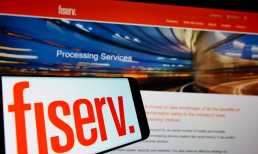Whether it’s a finance team separated from the physical office mail and corporate checkbook, or legions of remote workers seeking purchase authorizations or expense reimbursements, the shortcomings of paper-based payments and processes have been laid bare over the last 18 months.
It’s taken more than a year for some companies to get there, but the disaster recovery plans they activated to help navigate the abrupt shift to a totally remote workforce have become the new normal for their finance teams — a digital shift for sending payments and for how they receive payments from business partners.
“Most companies had some inkling of their disaster recovery plan, but with everyone working remote, they had to execute it in the last 18 months,” TreviPay CEO Brandon Spear told Karen Webster in an interview. “I think when you [actually execute the plans], you realize where all the holes are and all the things you have to fix.”
Part of that post-pandemic repair process involves extending the newly embedded digital tech to additional areas and functions, especially those related to the reality of a mostly remote workforce.
As a result, Spear said it becomes essential for companies to ensure their systems environments are safe for staff and protected against phishing attempts and fraud. With the distributed nature of the finance teams, it is also critical to be aware of bad actors trying to influence the teams and staff.
“All of that has driven toward more digitization, more multifactor authentication, use of tools and technology — and an increased passion for making sure those environments, transactions and interactions are all safe,” he said.
Advertisement: Scroll to Continue
See also: Cash Flow Needs Have Made B2B Automation ‘Top Priority’ for CFOs
The Need for Interdepartmental Sync
Even when a company’s workforce is scattered globally, authorizing expenses, approving suppliers and managing the finance function still often happens locally. Spear said he finds it significant that businesses align their procurement practices with accounts payable (AP) and the staff that leverages the contracts that procurement puts in place. Synchronized operations between these three departments will allow companies to eliminate the paper check process, as all payments can be carried out by wire, ACH or credit card.
“The best way [to align these practices] is to make sure that all the data that procurement and accounts payable require is available to them on the invoices that get submitted electronically into a digital system,” said Spear.
Once that is done, he said, the newly aligned data helps AP staff ensure an invoice is compliant with procurement practices.
“Suddenly, the funds flow in digitally, then it’s much easier to get all of these processes working in harmony,” he said.
Read also: TreviPay Will Power Flowfy’s B2B Fashion Trade Credit Platform
Security Through Mobile Apps
Once the procurement practice and finance functions are optimized, the next step for businesses is to ensure a secure, fully deployed digital payments process in a remote work environment. This interface needs to be globally accessible, user-friendly and of the highest degree of security for identity verification, authentication and fraud prevention.
Spear emphasized that mobile apps present growing relevancy in enabling an efficient and secure payments infrastructure. They ensure procurement practices are followed, and they safeguard against any potential fraud due to stolen identity.
Biometrics are now regarded as the gold standard for authenticating users. Coupled with multifactor authentication (MFA), the two provide the safest ways to validate the correct person is using the device and confirm the specific user is authorized to make a purchase.
See also: As SMBs Invest in Digitization, Consumerization of B2B Commerce Takes Shape
Becoming the ‘Preferred’ Supplier
The most significant impact of technology is realized when the buyer doesn’t have to do anything differently than what they would ordinarily do to realize its benefits. Spear noted that businesses need to make it easy for buyers to submit remittance advice and then digitize it with the software processes and other available tools available to simplify the complexities of reconciling payment invoices and cash application.
“We advocate that aspect all the time,” Spear said. “If you can meet the buyer with how they want to transact and interact with you, then your probability of being the easiest supplier is going to go up. If that goes up, your share of wallet is likely to go up, and so it becomes a virtuous circle if you get it right.”
Making Space for Buy Now, Pay Later in a B2B Context
The buy now, pay later (BNPL) option from a B2C perspective is intended to help consumers that don’t have the budget to buy a large-ticket item with a single invoice. When applied in a B2B context, Spear said he believes the option changes the game, particularly for small- to medium-sized business (SMB) customers and for some of their purchases.
“If your customers are small businesses that are buying 50 widgets once a year, the buy now, pay later option could be really interesting, as the buyer might not have the ability to pay for a single invoice and would want to spread it out,” he said, noting its potential for enabling capital purchases by SMBs across the globe.



